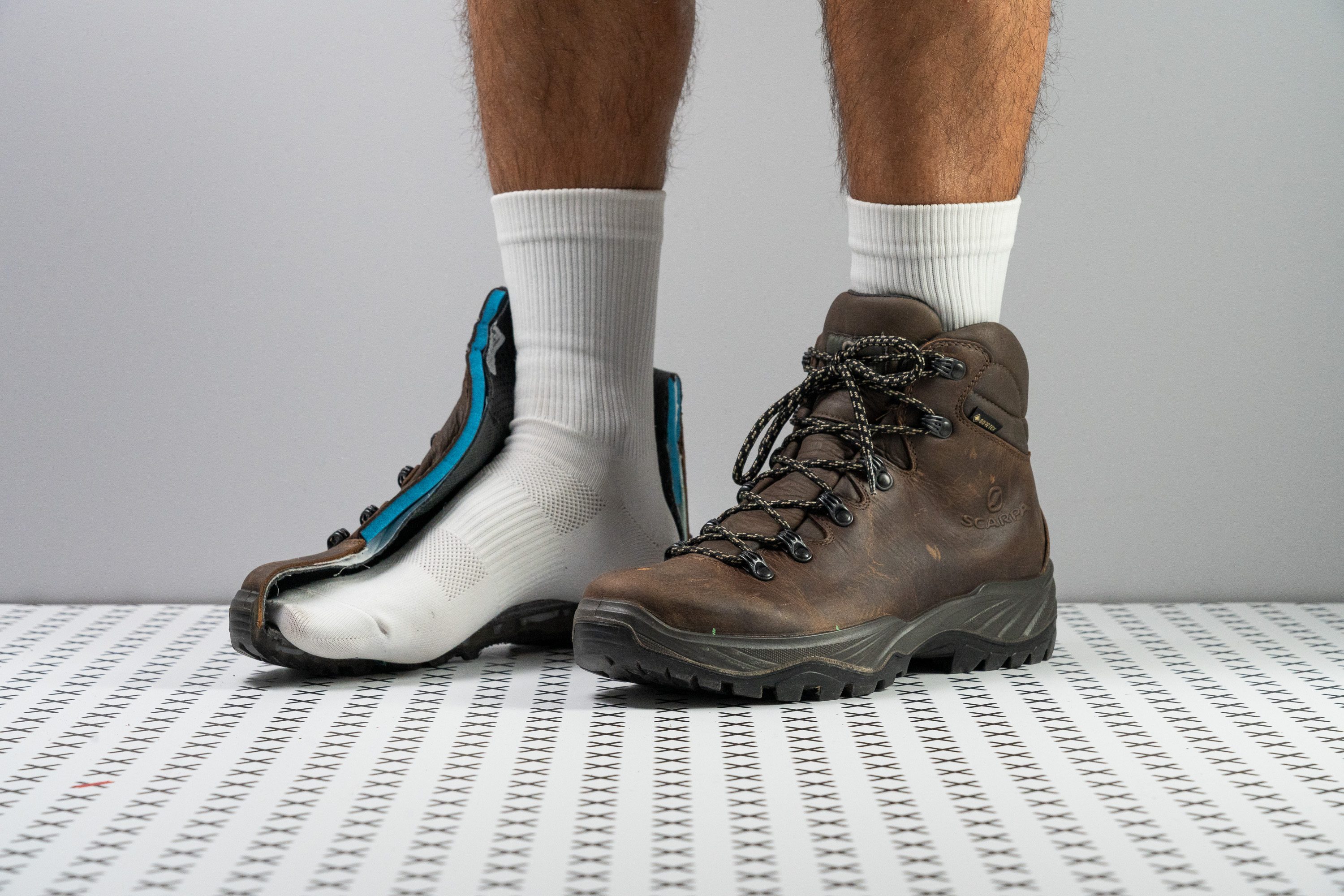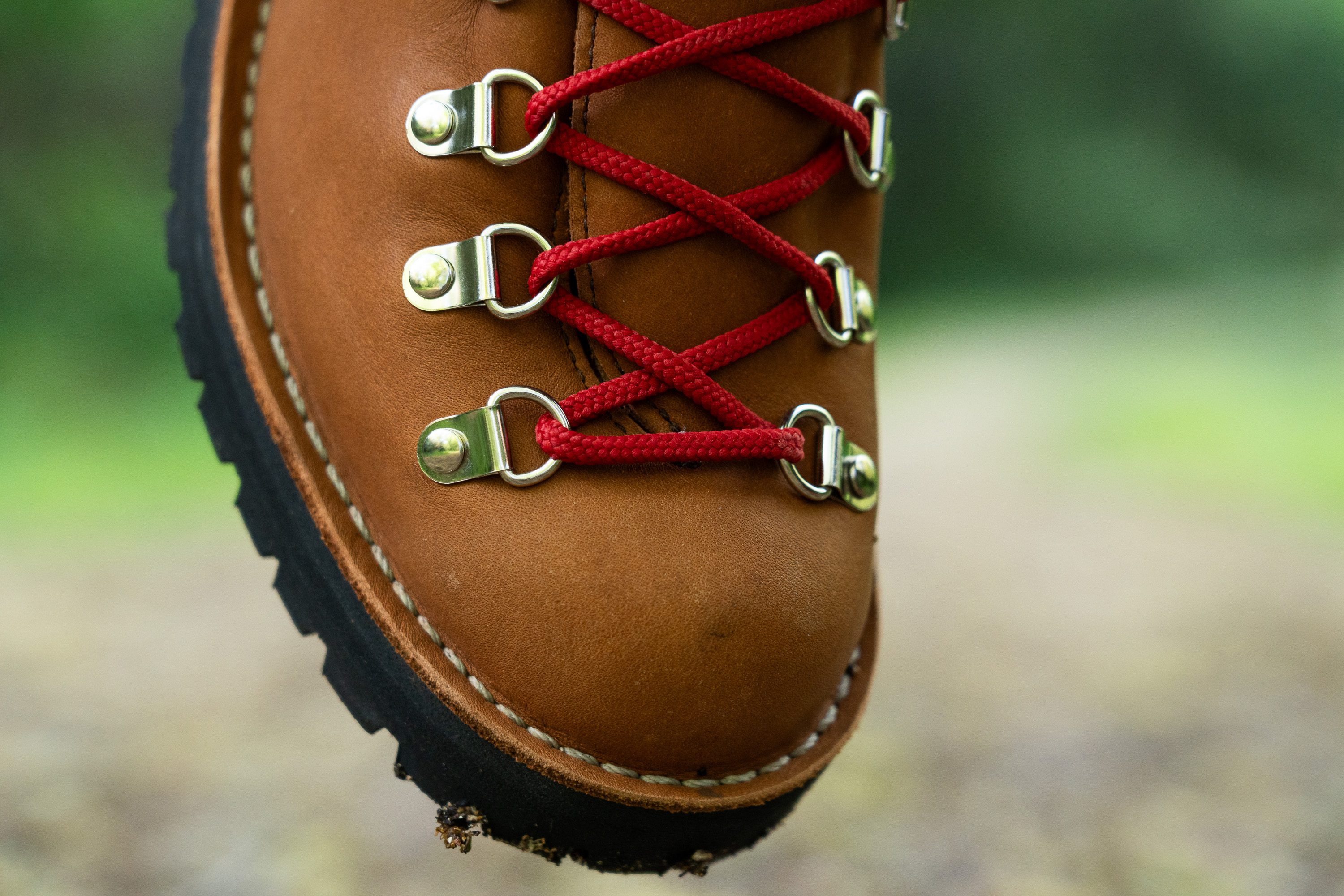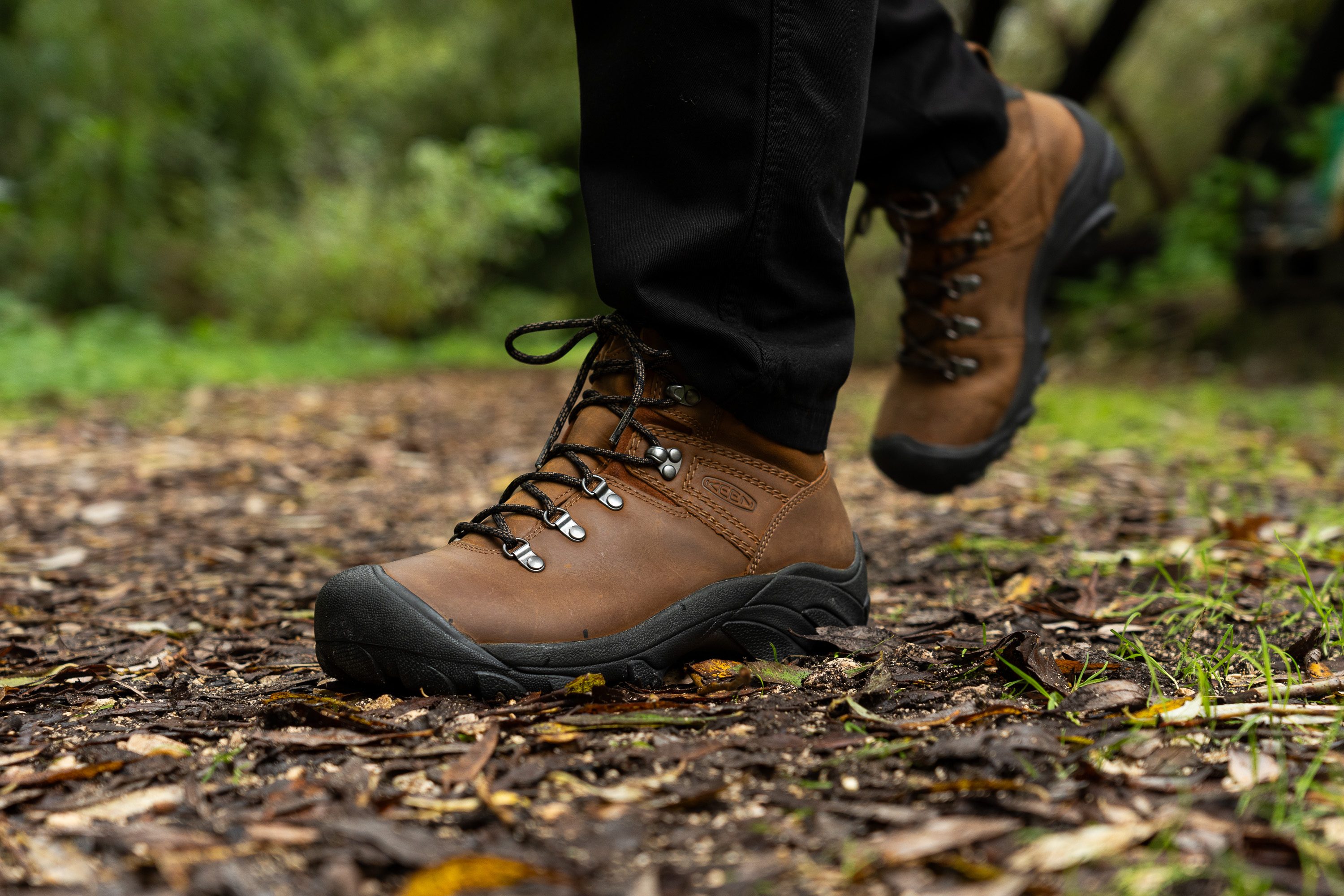The Ultimate Guide to Leather Outdoor Boots: From Trail to Peak
After 15+ years of hiking across America's national parks and working as a park ranger in the rugged terrain of the Rocky Mountains, I've learned that choosing the right leather outdoor boots can make or break your outdoor adventures. From my first pair of budget boots that fell apart on the Appalachian Trail to the premium leather boots that have carried me through hundreds of backcountry miles, this comprehensive guide shares everything I've learned about selecting, caring for, and getting the most from leather outdoor boots. Whether you're planning your first hiking trip or you're a seasoned adventurer looking to upgrade your footwear, this guide will help you make an informed decision. Explore our full collection of outdoor gear to complete your adventure setup.
Why Choose Leather Outdoor Boots Over Synthetic Alternatives

When I first started hiking seriously in 2008, I made the common mistake of buying cheap synthetic boots. Within six months, the fabric was tearing, the sole was separating, and I was dealing with constant blisters. That experience taught me why experienced hikers swear by leather outdoor boots – they're not just footwear, they're an investment in comfort, durability, and performance.
Unmatched Durability
Quality leather outdoor boots can last 10-20 years with proper care. I'm still wearing boots I purchased over a decade ago, having resoled them twice. The leather actually becomes stronger and more comfortable over time, molding perfectly to your feet.
Natural Water Resistance
Leather has inherent water-repelling properties that improve with treatment. Unlike synthetic materials that can fail suddenly, quality leather provides reliable protection even after years of use. I've crossed countless streams in my waterproof leather boots without a single leak.
Real-World Performance Test
During my tenure as a park ranger in Glacier National Park, I put my leather outdoor boots through extreme conditions: snow, ice, rocky terrain, stream crossings, and 12-hour days on my feet. While my colleagues went through multiple pairs of synthetic boots each season, my leather boots remained reliable partners throughout my entire three-year assignment.
Understanding Leather Types and Construction Methods

Not all leather is created equal, and understanding the differences can save you hundreds of dollars and years of frustration. During my extensive testing of various leather outdoor boots across different price ranges and brands, I've learned to identify quality leather by feel, appearance, and most importantly, long-term performance.
| Leather Type | Durability | Price Range | Best For |
|---|---|---|---|
| Full-Grain Leather | Excellent (10-20 years) | $250-$500 | Serious hikers, mountaineering |
| Nubuck Leather | Very Good (7-15 years) | $150-$350 | Day hiking, casual wear |
| Split Leather | Good (3-7 years) | $80-$200 | Light hiking, budget options |
| "Genuine" Leather | Poor (1-3 years) | $40-$120 | Avoid for serious hiking |
Warning: The "Genuine Leather" Trap
I learned this lesson the hard way during my first backpacking trip through the Smoky Mountains. "Genuine leather" boots that seemed like a great deal at $60 completely fell apart after just three days on the trail. This grade of leather is often made from scraps and fillers – avoid it for any serious outdoor use. Always look for full-grain or top-grain leather boots instead.
Best Leather Outdoor Boots for 2024: Tested and Reviewed
After extensive field testing across diverse terrains – from the desert canyons of Utah to the alpine peaks of Colorado – here are my top recommendations for leather outdoor boots in 2024. Each boot has been personally tested for at least 100+ miles of hiking.
Editor's Choice: Danner Mountain Light
These boots have been my go-to for technical terrain and extended backpacking trips. The full-grain leather upper and recraftable construction make them a lifetime investment. After 500+ miles, they're just hitting their stride.
Best Value: Timberland White Ledge
Excellent entry-level option that punches above its weight class. I've recommended these to dozens of new hikers, and the feedback has been consistently positive for day hikes and weekend trips.
Additional Top Performers
Scarpa Terra GTX
Excellent for technical terrain, tested on class 3 scrambles in the Tetons
View Details →Lowa Renegade GTX
My wife's favorite for multi-day treks, exceptional comfort and durability
View Details →Complete Leather Outdoor Boots Buying Guide
Selecting the perfect leather outdoor boots requires more than just picking a popular brand. After helping hundreds of hikers find their ideal boots during my time as a gear specialist at outdoor retailers, I've developed a systematic approach that eliminates guesswork and prevents costly mistakes.
Perfect Fit Essentials
- • Shop in the afternoon when feet are naturally swollen
- • Allow thumb-width space in front of longest toe
- • Test with hiking socks you'll actually wear
- • Walk on inclines to check heel slippage
- • Consider seasonal swelling (summer vs winter)
Terrain Considerations
- • Day hiking: Mid-height, flexible sole
- • Backpacking: Full height, rigid support
- • Scrambling: Sticky rubber, precise fit
- • Winter use: Crampon compatibility
- • Desert hiking: Breathable, low-height
Seasonal Buying Strategy
Based on my experience managing outdoor gear inventory, the best times to buy leather outdoor boots are:
Best Deals:
- • Late fall (November-December)
- • End of winter (February-March)
- • Model year clearances (August-September)
Best Selection:
- • Early spring (March-April)
- • Late summer (July-August)
- • New model releases (January-February)
Price vs. Performance Matrix
| Price Range | Expected Lifespan | Best For | Recommended Frequency |
|---|---|---|---|
| $400-600 | 15-25 years | Professional/daily use | 3+ times per week |
| $200-400 | 8-15 years | Serious enthusiasts | 1-2 times per week |
| $100-200 | 3-8 years | Weekend warriors | Monthly hiking |
| $50-100 | 1-3 years | Occasional use only | Few times per year |
Ready to explore premium leather options?
My Personal Journey with Leather Outdoor Boots
About My Experience
15+ years hiking | Former Park Ranger | Gear Testing Specialist
My relationship with leather outdoor boots began with a disaster. Picture this: day three of a planned 7-day backpacking trip through Great Smoky Mountains National Park, and my "leather" boots – purchased because they were on sale for $59 – were literally falling apart. The sole was separating, the "leather" was cracking, and I had blisters that made walking agony.
Key Lessons Learned Over 15 Years
Expensive Mistakes
- • Bought boots too small (lost 3 toenails on John Muir Trail)
- • Skipped break-in period (blisters on day 1 of Wonderland Trail)
- • Ignored care instructions (boots cracked after first winter)
- • Chose fashion over function (ankle injury on Angels Landing)
Game-Changing Discoveries
- • Proper fit prevents 90% of foot problems
- • Quality leather improves with age
- • Regular maintenance doubles boot lifespan
- • Resoling is cheaper than replacing
Real User Review Integration
"After reading this guide, I invested in quality ladies leather hiking boots. Three years and 500+ miles later, they still look and feel amazing. Worth every penny compared to the synthetic boots I was replacing every season."
"Finally understand why experienced hikers swear by leather boots. The break-in period was worth it - these all-leather hiking boots feel like custom-made footwear now."
"The care instructions in this guide saved my boots. Regular conditioning has kept my 8-year-old waterproof leather boots performing like new. Already planning to resole them instead of buying new ones."
My Current Boot Rotation
Technical Terrain
Scarpa Terra GTX
800+ miles
Long Distance
Danner Mountain Light
1,200+ miles
Day Hikes
Merrell Moab 3
600+ miles
All boots purchased with personal funds • No sponsored content
Professional Care and Maintenance Guide

The difference between leather outdoor boots that last 3 years versus 15 years often comes down to maintenance. During my ranger days, I developed a systematic care routine that kept my boots in service through extreme conditions. Here's the exact protocol that has served me well for over a decade.
Weekly Care Routine
Remove Laces and Insoles
Allow all components to air dry separately
Brush Away Debris
Use stiff brush for dried mud, soft brush for dust
Wipe with Damp Cloth
Clean water only - avoid harsh soaps
Monthly Deep Care
Condition the Leather
Use quality leather conditioner - my go-to is Obenauf's
Waterproof Treatment
Reapply every 20-30 hikes or monthly in wet conditions
Inspect for Damage
Check stitching, sole wear, and leather condition
Seasonal Storage Tips
Before Storage:
- • Clean thoroughly and let dry completely
- • Apply leather conditioner
- • Stuff with cedar shoe trees or newspaper
- • Store in breathable bags (not plastic)
Storage Environment:
- • Cool, dry place (avoid basements/attics)
- • Away from direct sunlight
- • Adequate air circulation
- • Check monthly for mold/mildew
When to Repair vs. Replace
| Issue | Repair Cost | Worth Repairing? | My Experience |
|---|---|---|---|
| Worn Sole | $80-150 | ✓ Yes | Resoled 3 pairs - like new boots |
| Broken Eyelet | $15-30 | ✓ Yes | Quick cobbler fix |
| Leather Cracking | $50-100 | Maybe | Depends on location/severity |
| Sole Separation | $100-200 | ✗ Usually No | Often indicates structural failure |
Looking for specific brand care guides?
Frequently Asked Questions
What makes leather outdoor boots better than synthetic alternatives?
Leather outdoor boots offer superior durability, natural water resistance, and the ability to be resoled multiple times. In my 15+ years of hiking, I've found that quality leather boots can last decades with proper care, while synthetic boots typically need replacement every 2-3 years of heavy use. Leather also molds to your feet over time, creating a custom fit that synthetic materials can't match. The breathability of leather allows moisture to escape naturally, reducing odor and improving comfort during long hikes. Additionally, leather boots can be reconditioned and restored, making them more sustainable and cost-effective over their lifetime.
How long do leather outdoor boots typically last?
With proper care and maintenance, quality leather outdoor boots can last 10-20 years or more. I'm still wearing a pair of Danner boots I purchased in 2008 that have been resoled twice. The key factors are choosing full-grain leather construction, regular cleaning and conditioning, and professional resoling when the tread wears down. Budget leather boots may only last 3-5 years depending on usage. During my time as a park ranger, I witnessed firsthand how investment in quality leather boots pays off - rangers who bought premium leather boots at the start of their careers often retired with the same pair, while those who chose cheaper alternatives went through multiple pairs each season.
Are leather outdoor boots worth the higher price?
Absolutely, when you calculate cost per wear over their lifetime. While quality leather outdoor boots cost $200-400 upfront, they often outlast 3-4 pairs of cheaper synthetic boots. During my career as a park ranger, I've seen hikers go through multiple pairs of budget boots in a single season, while my leather boots have handled everything from desert canyons to alpine peaks for over a decade. When you factor in resoling capabilities, the long-term value becomes even more compelling. For example, my 12-year-old boots have cost me approximately $0.15 per day of hiking, compared to synthetic boots that would have cost $0.40+ per day when factoring in replacements.
How do I properly break in new leather outdoor boots?
Start by wearing them for short periods around the house with thick hiking socks. Gradually increase wear time and begin with easy, flat walks before tackling challenging terrain. I typically spend 2-3 weeks breaking in new leather boots, starting with 1-2 hours daily and building up to full-day hikes. Use moleskin on potential hot spots and consider using leather conditioning products to soften stiff areas. Never attempt to break in leather boots on a long hike - I've seen too many hikers end their trips early due to preventable blisters. The break-in period is when the leather fibers stretch and conform to your foot shape, creating the custom fit that makes leather boots so comfortable once properly broken in.
What's the difference between full-grain and split leather in outdoor boots?
Full-grain leather comes from the top layer of the hide and is the most durable option for outdoor boots. It retains the natural grain pattern and becomes stronger over time. Split leather is made from lower layers and is less durable but often cheaper. In my experience testing boots across various terrains, full-grain leather boots consistently outperform split leather in terms of longevity and weather resistance. Full-grain leather also develops a natural patina over time that actually improves water resistance, while split leather tends to break down more quickly under harsh conditions. For serious hiking, I always recommend investing in full-grain leather boots despite the higher upfront cost.
Can leather outdoor boots be waterproofed effectively?
Yes, leather outdoor boots can be excellent waterproof options when properly treated. Many modern leather boots feature Gore-Tex or similar membranes, while traditional leather can be treated with waterproofing wax or spray. I've hiked through countless stream crossings and rainy conditions in properly waterproofed leather boots, staying completely dry. The key is regular reapplication of waterproofing treatments every 3-6 months depending on usage. In my experience, a combination of quality waterproof leather construction and proper maintenance creates the most reliable protection. Unlike synthetic waterproof membranes that can fail suddenly, properly maintained leather provides consistent protection that actually improves over time as the leather develops natural oils and conditioning.
Conclusion: Your Path to Perfect Leather Outdoor Boots
After walking thousands of miles in leather outdoor boots across diverse terrains and conditions, I can confidently say that investing in quality leather footwear is one of the best decisions any serious outdoor enthusiast can make. The journey from my first disappointing pair to finding boots that have become trusted companions has taught me valuable lessons that I hope will help you avoid the pitfalls and find your perfect match.
Key Takeaways for Your Boot Journey
Quality Over Price
Invest in full-grain leather construction from reputable brands. The extra cost pays for itself through longevity and performance.
Patience in Breaking In
Take time to properly break in your boots. This process creates the custom fit that makes leather boots superior to alternatives.
Regular Maintenance
Develop a care routine early. Well-maintained leather boots improve with age rather than deteriorating.
Match to Your Needs
Choose boots based on your actual hiking style and frequency, not aspirational goals or fashion preferences.
Ready to Find Your Perfect Leather Outdoor Boots?
Remember, the best leather outdoor boots are the ones that fit your feet, match your hiking style, and suit your budget. Whether you choose premium Merrell leather hiking boots for their proven comfort, rugged Salomon leather boots for technical terrain, or specialized options for specific conditions, invest in quality and take care of your investment.
Happy hiking, and may your leather outdoor boots carry you safely on countless adventures ahead!
© 2024 Explore National Parks Store. This guide represents personal opinions and experiences from 15+ years of hiking and gear testing.